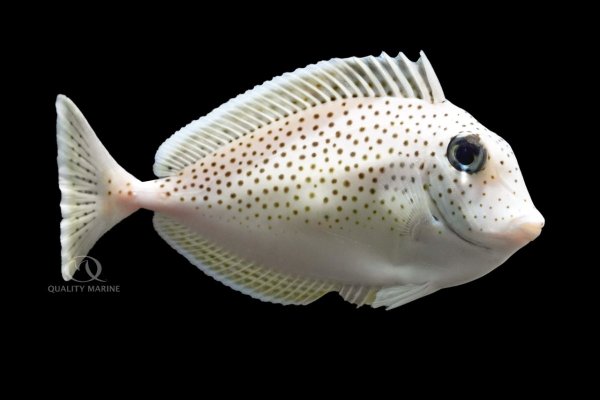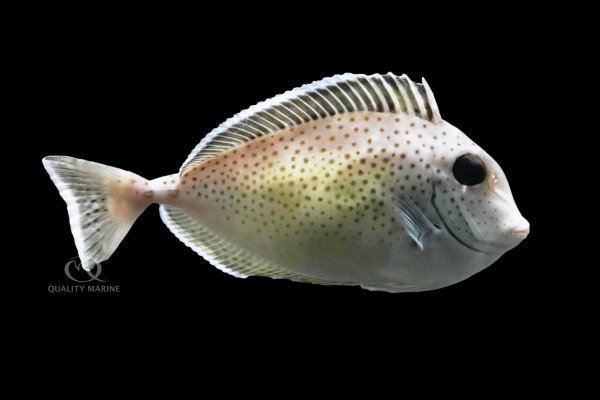
The Humpnose Unicorn Tang is a gorgeous fish that also gets called the Humphead Tang and Humpnose Unicornfish. Their Scientific name is Naso tuberosus, Naso for nose; many of the fish in this genus have noses that are unique, and this one's nose is well, tuberous. The other fish in the genus that is also commonly called a Unicorn is the slightly more famous, and closely related reef fish, Naso unicornis, which in adulthood grow a distinctive single horn out of their forehead. The humpnose Unicorn shares many traits with the true Unicorn, but instead of the fairy tale inspired horn, these big, beautiful fish grow out a bump in its place that seems more like an Elephant Seal or a Humphead Wrasse.
The Humpnose Unicorn Tang is a common fish throughout the Indian Ocean and the Western Pacific Ocean, where it is almost always harvested as a food fish; they are much less frequently seen in home aquariums. Found near the coral reefs of tropical seas, as juveniles they are pale gray with tan / orange-ish spots that turn darker as they age, and remain on the adult fish as dark blue, dark gray or black dots. These juveniles are often found in large schools with other species of juvenile Surgeonfish, but adults are usually solitary. Individuals have been identified at stupefying depths, but they are almost always found in less than 100 feet of water.
A variety of foods should be offered to any surgeonfish, and these are no exception. We feed them lots of algae like Nutramar OGO and Nori as it is important for how their digestive systems work. However, a surprisingly large component of their diet is small invertebrates that are both intentionally eaten and accidentally ingested with their algal diet. To this end, we also give them a nutrient dense pellet, which is a must for their nutritional needs. In house we utilize Nutramar's Algae and Color Balance pellets and shots. The shots are great because they offer a way for the fish to graze on the food, which is a natural feeding behavior for them. For fish who don't take to pellets immediately, they can be mixed with some thawed, meaty food like Gamma Mysis or any of their enhanced Brine Shrimp products to fool the fish into taking the pellets. They will very quickly graze any hair algae and even some caluperas out of existence in a tank. Click here to learn more











